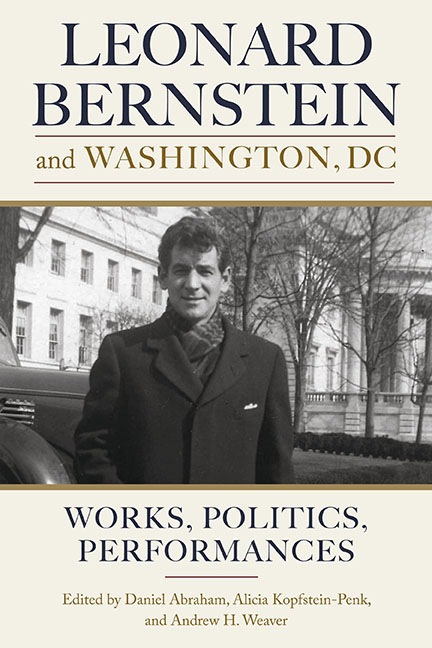4 - The New York Philharmonic European Tour of 1959 and Bernstein as Eisenhower's American Cultural Ambassador
Published online by Cambridge University Press: 28 April 2020
Summary
On the morning of October 12, 1959, three planes landed at the Military Air Transport Service Terminal of National Airport in Washington, DC. Two carried more than one hundred members of the New York Philharmonic, including its forty-one-year-old music director Leonard Bernstein; the other was filled with instruments. At 8:05 p.m. that same evening, Bernstein raised his baton in DC's Constitution Hall to begin the orchestra's first concert on American soil in over seventy days. Presenting works by Samuel Barber, Beethoven, and Dmitri Shostakovich, the members of the Philharmonic were hailed as diplomatic heroes. From Athens to Moscow to London, the orchestra had caravanned through the Iron Curtain and back as musical ambassadors of President Eisenhower's Special International Program for Cultural Presentations (see table 4.1). The works that were performed on the DC program mirrored what had been heard in Moscow, giving Americans a taste of the way their musical identity had been represented abroad. This moment brought into focus the image of Bernstein as a cultural ambassador and messiah, bringing music to the purportedly oppressed peoples of the USSR.
Acclaimed by the press as “the versatile composer-conductor-pianist, whose fiery musicianship thawed many hearts behind the Iron Curtain,” Bernstein was a handsome and charming wunderkind who embodied the most desirable aspects of American high culture. The concert ended to boisterous applause, and around midnight the musicians flew straight back to New York City. Bernstein remained in DC for a few days to attend press interviews and society luncheons, receiving a symbolic golden key to DC and New York City—the political and cultural capitals of the United States, respectively. The triumphant homecoming concert and preceding tour solidified Bernstein's place as an American cultural icon, a movement that had begun in earnest earlier that year when on May 14 Bernstein stood alongside President Eisenhower at the induction of Lincoln Center.
The 1959 European tour and its political origins have remained understudied, yet they are critical pieces both in the narrative of Bernstein's political redemption and in Eisenhower's quest to end the Cold War.
- Type
- Chapter
- Information
- Leonard Bernstein and Washington, DCWorks, Politics, Performances, pp. 86 - 104Publisher: Boydell & BrewerPrint publication year: 2020

